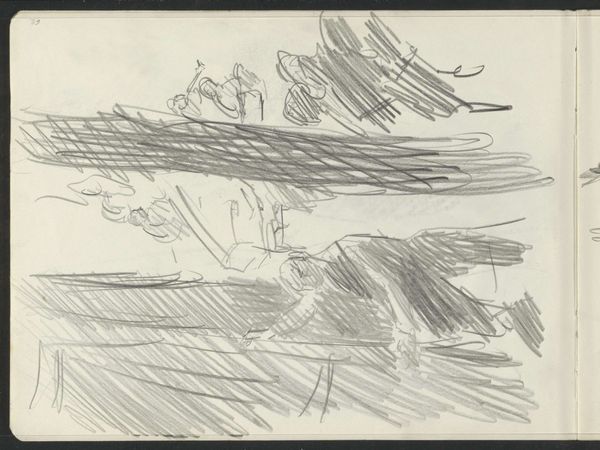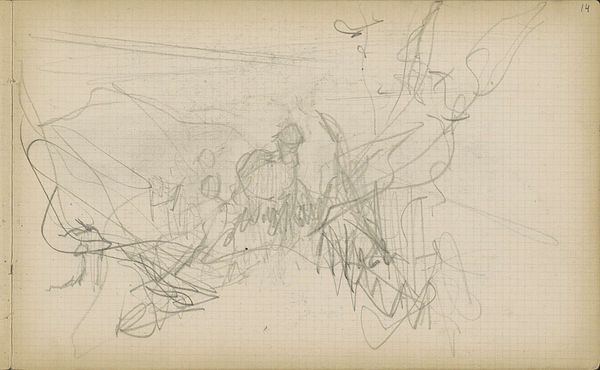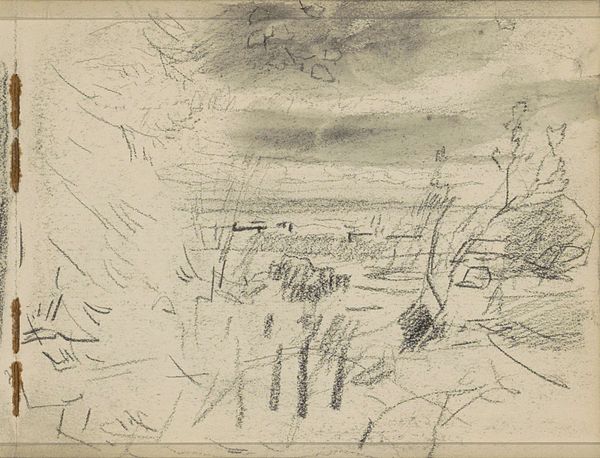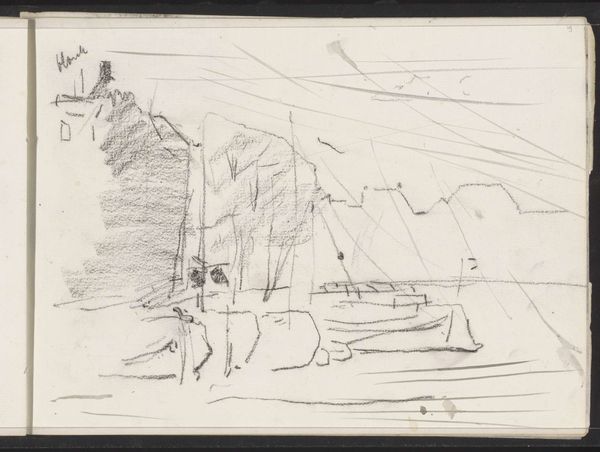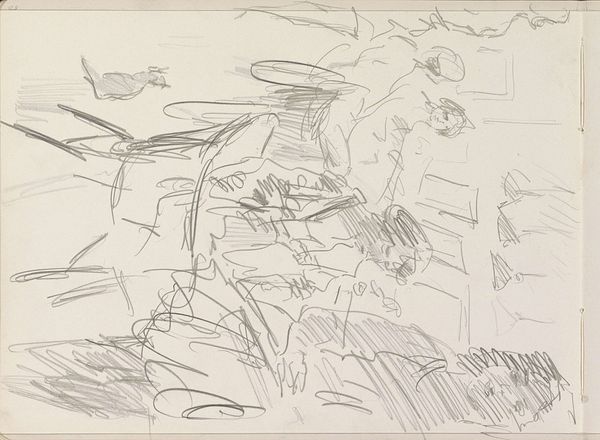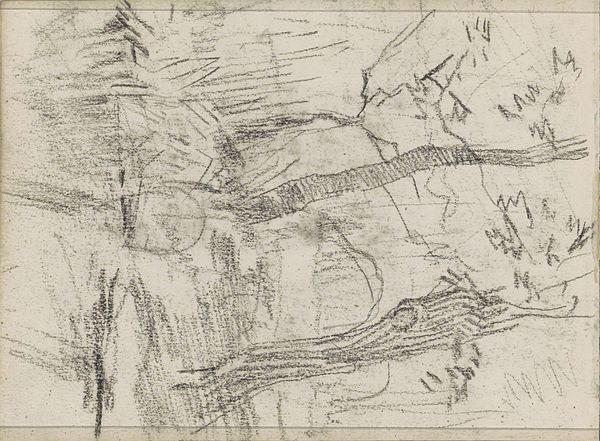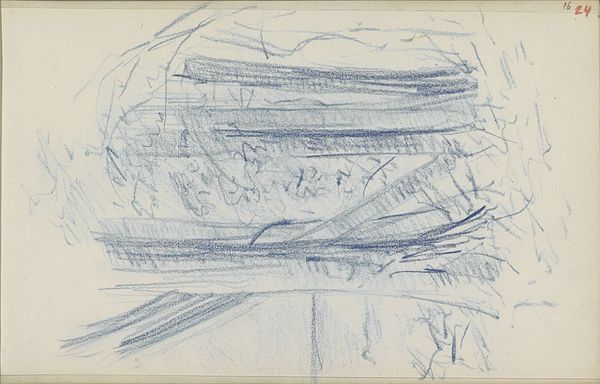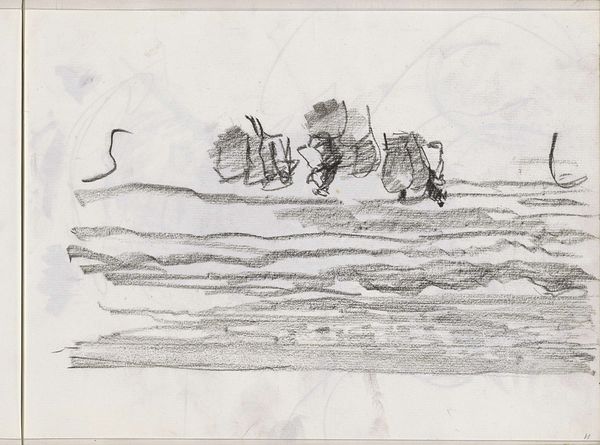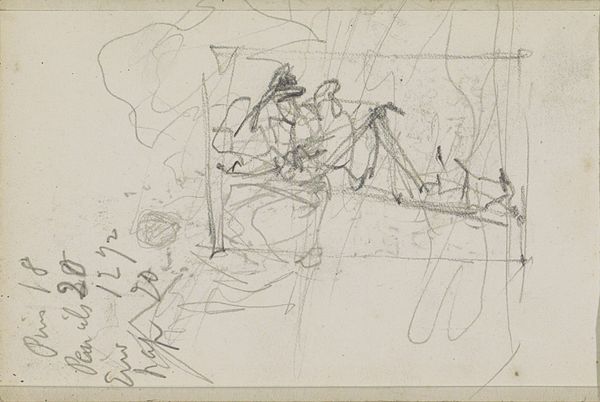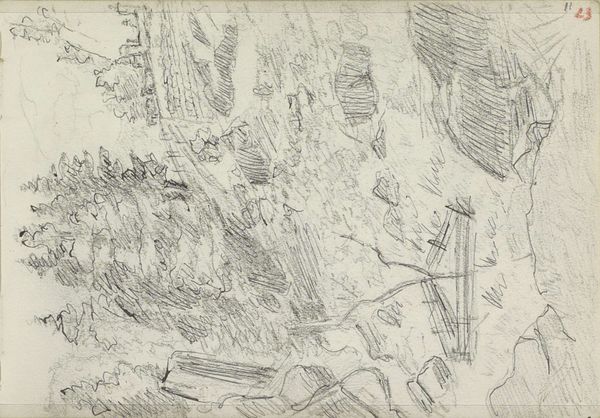
drawing, pencil
#
drawing
#
light pencil work
#
pen sketch
#
pencil sketch
#
landscape
#
form
#
personal sketchbook
#
idea generation sketch
#
sketchwork
#
ink drawing experimentation
#
pen-ink sketch
#
pencil
#
sketchbook drawing
#
sketchbook art
Copyright: Rijks Museum: Open Domain
Editor: Here we have Johannes Bosboom's "Kerkinterieur," likely created between 1845 and 1891. It's a pencil drawing currently housed in the Rijksmuseum. The sketchiness gives it an unfinished, almost dreamlike quality. What do you see in this piece, considering its context? Curator: This sketch offers a glimpse into 19th-century Dutch society and its relationship with religious spaces. Think about the role of the church during this period – not just as a place of worship, but also as a center of community, a stage for social performance. Does this interior feel inviting, oppressive, neutral? Editor: I suppose "neutral" is the word that springs to mind. There are only few figures visible in this quick sketch; so what exactly might Bosboom have been attempting to explore with such emphasis on form? Curator: Exactly. Bosboom’s choice to focus on architectural form is revealing. He lived during a time of significant social upheaval, where traditional power structures, including the church, were being questioned. Could this rendering be a meditation on the enduring nature of institutions versus the fleeting presence of individuals? How does Bosboom use line and perspective to emphasize this tension? Editor: The perspective is interesting now that you point that out: not only the use of line to create vast space with very few marks on the paper but also where these figures are placed within it to almost disappear from view. Curator: Yes. Bosboom uses quick, almost frantic lines, which suggests an attempt to capture not just the appearance but also the essence, perhaps even the feeling, of the church. Remember, the 19th century was also a period of burgeoning industrialization and urbanization, what implications would those broader social changes have in terms of the ways an artist approached such sacred environments as Churches and their architecture. What purpose do they continue to hold in the face of rapid development. Editor: This makes me look at the sketch very differently. I’m now considering the social and political atmosphere which prompts the viewer to engage. Curator: Exactly. Art doesn’t exist in a vacuum. It’s always in dialogue with the world around it. I see Bosboom wrestling with his relationship to faith, to community, and to a rapidly changing society. Editor: Thank you so much; this was really helpful for contextualizing Bosboom’s creative thinking. Curator: It's been a pleasure. This dialogue only reminds us that analyzing all visual works must address its multifaceted layers beyond the purely aesthetic plane to include questions of gender, power, and socio-political elements to the fore.
Comments
No comments
Be the first to comment and join the conversation on the ultimate creative platform.
